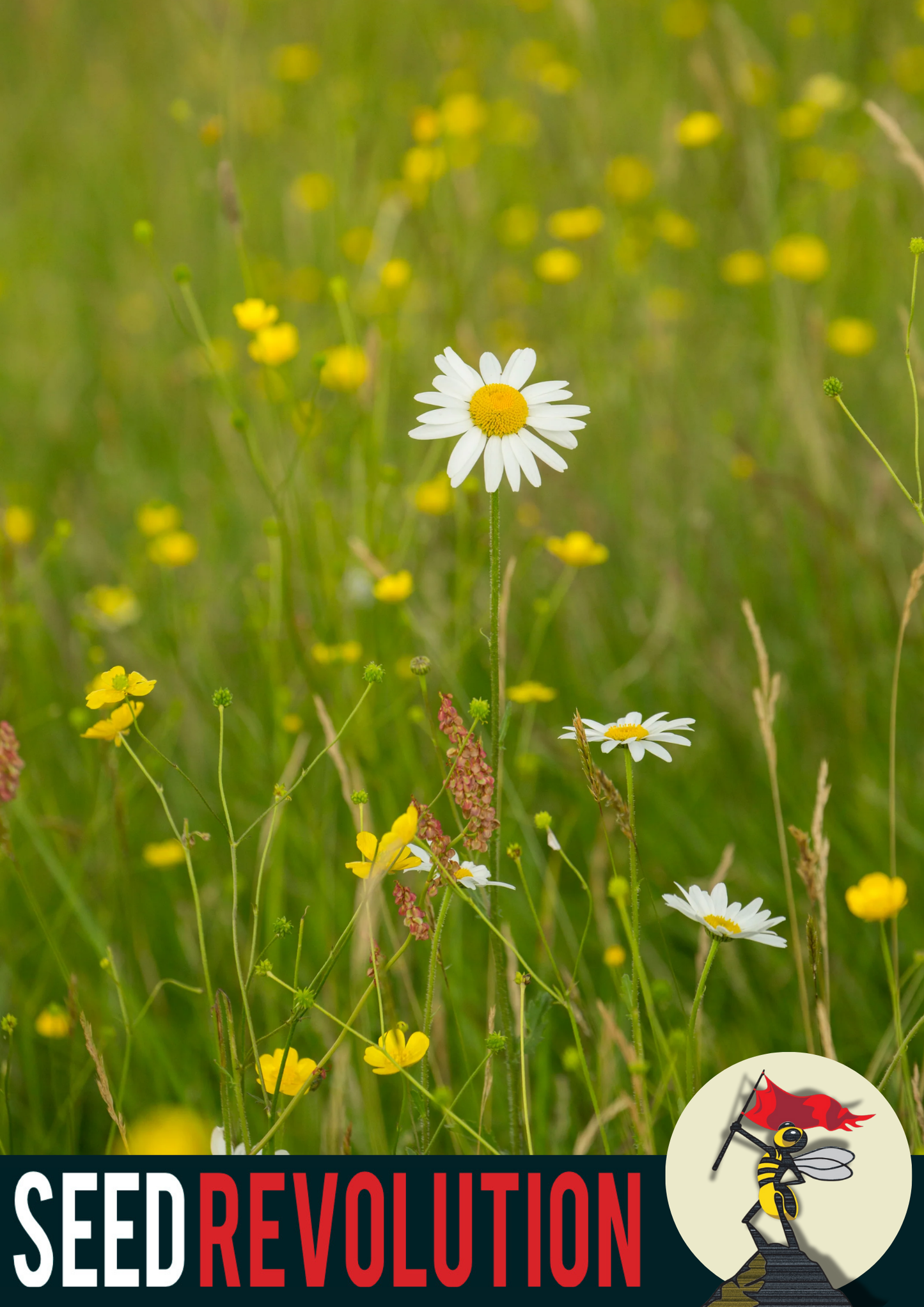My Store
Acid Soil 80/20 Wild Flower Seed Mix
Acid Soil 80/20 Wild Flower Seed Mix
Couldn't load pickup availability
We’ve carefully curated this mix of wild flowers and grasses as they thrive in acidic soils. Complications arise when trying to grow meadows because the wrong seeds are chosen for the wrong soil. For stress-free gardening getting this right can be important.
Clues you have acidic is if you have lots of organic matter in your soil. Leaves and twigs will increase the acidity of soil as they rot. If you’re not sure if you have acidic soil or not a simple test can be done by putting a spoonful of soil into a cup and submerging it in water. Add a teaspoon of baking soda. If the soil-water cocktail bubbles over furiously you know you have acidic soil.
How to Plant
Cheap and Easy Method:
For a quick and cost-effective approach, simply scatter the seeds directly onto bare soil. This method requires minimal preparation but has a lower success rate, as it relies heavily on natural conditions being favourable. Clear the area of any debris and lightly rake the soil to create a loose surface. Evenly broadcast the seeds across the soil, then lightly rake again to ensure good seed-to-soil contact.
More Involved Method:
For better results, especially in areas with aggressive weeds or where the soil may be particularly challenging, consider using a terram membrane. This method involves laying a terram membrane over the planting area to suppress unwanted vegetation. Over this membrane, add a layer of soil that is suitable for acidic conditions. Sow the seeds evenly across the soil surface and gently press them in to ensure good contact. This method, while more expensive and labour-intensive, greatly enhances the likelihood of establishing a vibrant and sustainable meadow.
When to Plant
The optimal time to plant your Acid Soil 80/20 Wild Flower Seed Mix is in the spring (March to May) or early autumn (September to early October). These periods offer the best temperatures and adequate moisture levels for seed germination and root establishment.
Where to Plant
This mix is specifically designed to thrive in acidic soils, which are often found in regions with higher rainfall and specific geological conditions. Choose a location that naturally has acidic soil and ensures good drainage. Areas with full sunlight to partial shade are ideal.
Watering Schedule
During the initial establishment phase, maintain a consistent moisture level in the soil, keeping it moist but not waterlogged. Water the seeds gently to avoid washing them away. Once the plants are established, they typically require minimal watering, relying on natural rainfall. However, during prolonged dry spells, occasional watering may be necessary to maintain healthy growth.
Blooming Period
The wildflowers in your Acid Soil 80/20 Wild Flower Seed Mix will generally bloom from late spring through late summer, approximately from May to August. The exact timing can vary based on regional climate specifics and yearly weather variations.
Expected Plant Height
The plants in this mix will vary in height, generally ranging from 20 cm to 1 metre. This variation creates a textured, dynamic appearance that provides depth and interest, while also supporting a diverse range of wildlife and pollinators.
What you get
Wildflowers and Grasses Included in the Mix
Wildflowers:
- Agrimony (Agrimonia eupatoria)
- Betony (Stachys officinalis)
- Birdsfoot Trefoil (Lotus corniculatus)
- Common Cat’s-ear (Hypochaeris radicata)
- Common Knapweed (Centaurea nigra)
- Common St John's-wort (Hypericum perforatum)
- Common Sorrel (Rumex acetosa)
- Cornflower (Centaurea cyanus)
- Devil’s-bit Scabious (Succisa pratensis)
- Foxglove (Digitalis purpurea)
- Lady’s Bedstraw (Galium verum)
- Meadow Buttercup (Ranunculus acris)
- Ox-eye Daisy (Leucanthemum vulgare)
- Ragged Robin (Lychnis flos-cuculi)
- Sheep’s Sorrel (Rumex acetosella)
- Sneezewort (Achillea ptarmica)
- St John's Wort (Hypericum perforatum)
- Tufted Vetch (Vicia cracca)
- Viper's Bugloss ( Echium vulgare)
- Wood Sage (Teucrium scorodonia)
- Yarrow (Achillea millefolium)
- Yellow-Rattle (Rhinanthus minor)
Grasses:
- Common Bent (Agrostis capillaris)
- Creeping Bent (Agrostis stolonifera)
- Creeping Red Fescue (Festuca rubra ssp. rubra)
- Crested Dogstail (Cynosurus cristatus)
- Sheep’s Fescue (Festuca ovina)
- Small Leaved Timothy (Phleum bertolonii)
- Smooth Stalked Meadow Grass (Poa pratensis)
- Sweet Vernal Grass (Anthoxanthum odoratum)
- Wavy Hair Grass (Deschampsia flexuosa)
- Yorkshire Fog (Holcus lanatus)
No Grow No Fee
Minimum of 2 years post sowing before claim can be made.
Share


